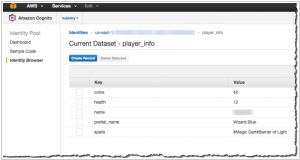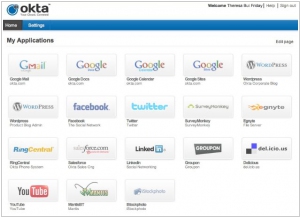Amazon Cognito vs Okta
March 17, 2025 | Author: Michael Stromann
11★
Amazon Cognito lets you add user sign-up, sign-in, and access control to your web and mobile apps quickly and easily.
32★
Support enterprise-wide identity management across any app, user or device with Okta - a future-proof cloud service designed for maximum ROI & ease of use. A secure, reliable cloud service for today’s hybrid IT reality. Comprehensive Identity Management that has no alternatives. Across All Apps, Users and Devices. Easy-to-use, Superior ROI. Integrated, Future Proof
Amazon Cognito and Okta, as it turns out, are remarkably similar in a way that would probably make the universe go "hmm." Both of them provide identity and access management (IAM) solutions, which, if you ask anyone, is really just a fancy way of saying they keep the bad guys out and the good guys in. They’re rather good at user authentication, ensuring that only the right people get access to things like highly secretive documents or spaceships. Oh and they both support multi-factor authentication, which is just a really fancy way of making sure you're not accidentally giving your password to a suspicious penguin. Also, they’re fond of letting developers do their thing with SDKs and APIs, because, well, why not?
Amazon Cognito, on the other hand, is the sort of identity management service that gets a bit giddy at the thought of being integrated with AWS. It’s like the world’s best backstage pass to AWS and if you’re a developer looking to integrate this into your apps, it’s a dream come true. Launched in 2014, it's part of Amazon’s grand plan for world (or at least cloud) domination. With Cognito, you get deep integration with AWS services—think Lambda, S3 and other things that sound like the names of distant galaxies—and it tends to be perfect for startups and small businesses who are looking for a little bit of help without having to make their own intergalactic IAM system.
Now, Okta is a little different. It’s not about that Amazon-esque world of AWS services; it’s more about enterprises looking for serious identity management to keep their massive organizations in line. Okta’s been around since 2009 and offers all sorts of enterprise-level features like user lifecycle management and Single Sign-On (SSO). If you're thinking of integrating Okta, you're probably dealing with a larger organization that needs a system as complex as a Vogon bureaucracy. It’s ideal for those who need to manage a vast network of cloud and on-prem applications, making it more of a tool for the corporate behemoth rather than a budding tech startup.
See also: Top 10 Identity Management platforms
Amazon Cognito, on the other hand, is the sort of identity management service that gets a bit giddy at the thought of being integrated with AWS. It’s like the world’s best backstage pass to AWS and if you’re a developer looking to integrate this into your apps, it’s a dream come true. Launched in 2014, it's part of Amazon’s grand plan for world (or at least cloud) domination. With Cognito, you get deep integration with AWS services—think Lambda, S3 and other things that sound like the names of distant galaxies—and it tends to be perfect for startups and small businesses who are looking for a little bit of help without having to make their own intergalactic IAM system.
Now, Okta is a little different. It’s not about that Amazon-esque world of AWS services; it’s more about enterprises looking for serious identity management to keep their massive organizations in line. Okta’s been around since 2009 and offers all sorts of enterprise-level features like user lifecycle management and Single Sign-On (SSO). If you're thinking of integrating Okta, you're probably dealing with a larger organization that needs a system as complex as a Vogon bureaucracy. It’s ideal for those who need to manage a vast network of cloud and on-prem applications, making it more of a tool for the corporate behemoth rather than a budding tech startup.
See also: Top 10 Identity Management platforms





